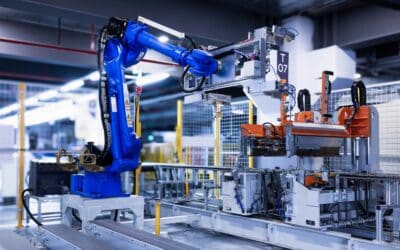Automation in production is a complex and elaborate undertaking. But not everything that is required in these projects is rocket science.
In this article, we would like to remind you that you have many skills and competences for successful automation already within you since your early childhood.
1. Don’t let yourself be fooled
Even the most beautiful drawings are of no use if the actual story behind them is not understood. At kindergarten age, children cannot yet read and are therefore dependent on their interpretations of the pictures. The story they see can sometimes deviate significantly from the text.
We no longer experience this dependence as adults. Nevertheless, we still fall into the same trap many times out of haste or convenience. So don’t rely on pretty pictures (or presentations) when planning your automation, but inform yourself critically!
Making things fit
Sometimes something may not seem to fit – the cars don’t go with the building blocks, the dragon costume doesn’t go with the high summer.
But young children are not put off by this. They recognise potential and opportunities everywhere. At the same time, they are not afraid to deviate from the intended paths and courageously try out new things.
This is exactly the attitude we should also adopt towards automation projects. Existing plants may not be able to be integrated 1:1 into Industry 4.0, but with a change mindset and creative solutions, the result can certainly be seen.
Together the tower gets higher
It’s obvious: small children often want to solve tasks on their own. But they quickly notice that the tower of building blocks is much higher when they let other children help.
No matter whether it’s about collecting building blocks, adding them or likewise stacking them – building together not only works better, the tower also gets taller.
We should also use this realisation for our automation projects: While we can be experts in one or two areas, we can never (permanently) take on all tasks. Support from other enthusiastic and experienced people can contribute decisively to the success of automation.
The proof of the pudding is in the eating
Technical experts are often used to developing and calculating ideas at their desks. Because it is central that the often high investments do not end in a failure for the company.
As a child, on the other hand, we solved challenges much more pragmatically: whether it was climbing a tree, mastering a flick up or defeating the boss in a computer game, we just got on with it. If one approach didn’t work, we tirelessly tried the next.
Of course, we should not build any automation systems today without having calculated them in advance and integrated them into the overall infrastructure. But a small workshop or even Lego Serious Play allow us to approach tasks creatively and already solve them on a small scale.
Algorithms are no witchcraft
Christmas, your own birthday or just because: The joy over a new building set was always great as a child! Sometimes we sat for hours with the building instructions in front of the parts and put each one in its correct place with the patience of a saint.
This process may not seem particularly automated, but ultimately building instructions are nothing more than algorithms. Only by correctly chaining the right components do we achieve the desired result. So we should devote similar care to coding and software development.
Special tasks require special measures

via Wikimedia
Do you still remember how vehemently you tried to separate two Lego bricks as a child? But they simply could not be detached! Surely we weren’t the only children who tried with other bricks, fingernails and even their teeth. But even then, success was not always certain.
Lego has done something about this frustration – and you may even have recognised the piece of plastic in the picture from your children’s Lego box. For particularly stubbornly jammed bricks, there is now this brick separator.
We cannot solve every problem on our own, no matter how creative our approaches. Instead, the solution can be very simple for an expert. We should therefore not shy away from seeking support from experienced people for our automation in the right places.
He who shares, gets ahead
Especially the very youngest still have a hard time with this attitude, but in kindergarten children quickly learn that playing and sharing together can be even more fun. When it comes to playing football, at the latest, it is clear that playing alone does not work.
We can also transfer this team concept to our automation projects. Success comes more quickly with a whole team of supporters and employees – because the individuals can each contribute their personal expert knowledge.
Full commitment
Sometimes you have to get your hands dirty and lend a hand. Toddlers are not afraid of anything – especially not of mud puddles.
This open approach can also prevent automation projects from failing. Especially as a supervisor, being fully involved in critical situations can be decisive for success.
Start small, go big
It is in the nature of things that children start out small and craft projects in particular can sometimes end up being adventurous at the beginning.
The approach also proves its worth in terms of automation: Especially if you have no or only little experience with the automation of production processes, it helps you to limit the scope of the project. For example, start with one sub-process and only expand the automated areas when it is working successfully.
No fear of large projects
No task is too big for little children. They approach all tasks optimistically and are firmly convinced of their success.
Of course, we should not ignore obstacles and challenges, but this attitude can also help us as adults: Only when we see the big vision behind our automation plans and understand the opportunities of it, will automation be a complete success. Think big!



